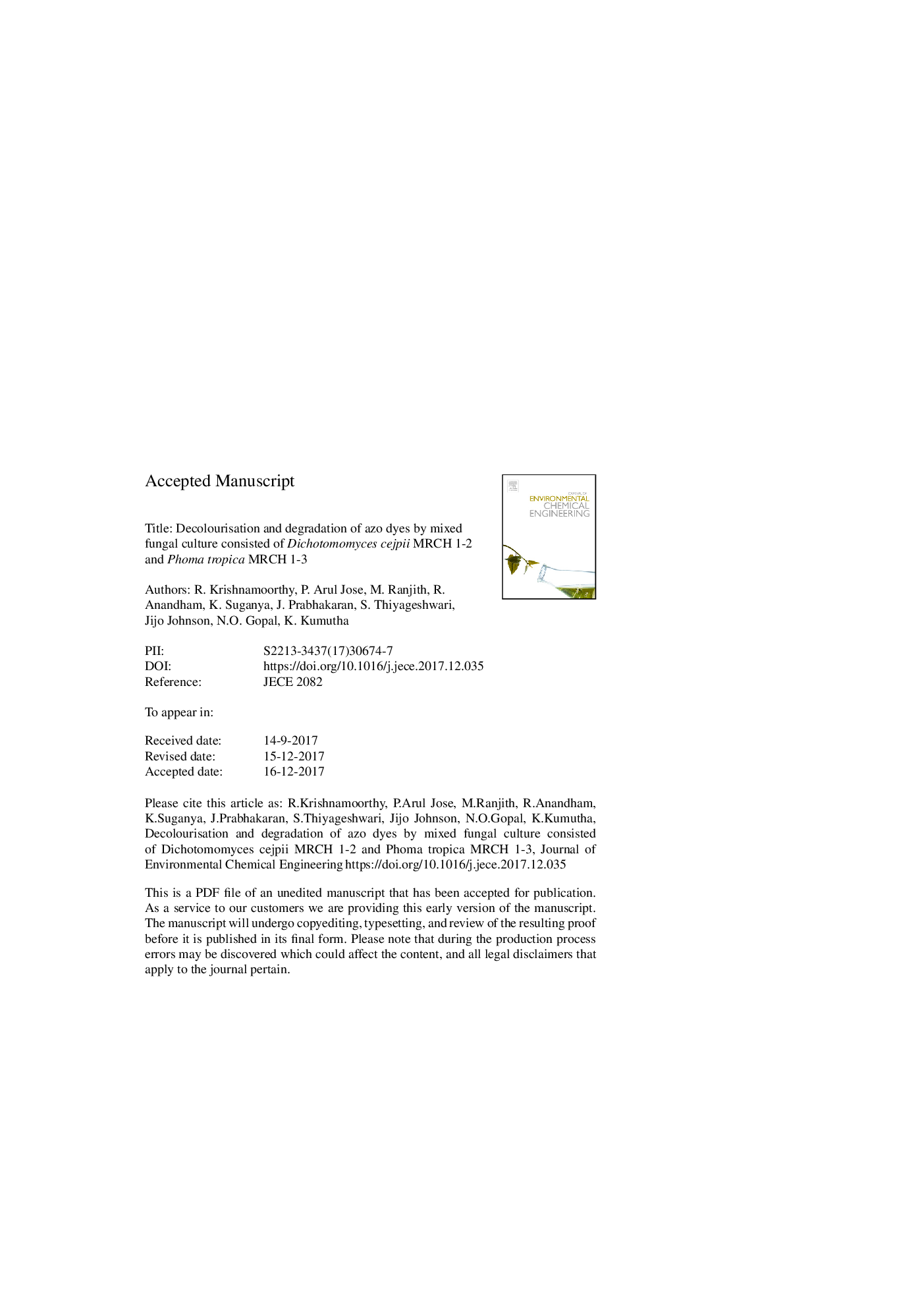| Article ID | Journal | Published Year | Pages | File Type |
|---|---|---|---|---|
| 6664116 | Journal of Environmental Chemical Engineering | 2018 | 29 Pages |
Abstract
Azo dyes are extensively used in textile processing industry, which are resistant to degradation and persist in soil for long time due to its fused aromatic structure. Aim of this study was to identify the azo dye compound accumulated in soil and screening of native azo dye degrading microorganisms. Azo dyes present in the soil sample were identified using high performance liquid chromatography (HPLC). Selective isolation of azo dye degrading microorganism was done using the minimal medium supplemented with azo dye (50â¯mg/L). The isolates were identified and tested as individual and as mixed cultures for azo dye decolourisation and degradation. Azo dye degradation pathway by the fungal cultures were assessed through GC-MS. HPLC analysis of soil samples indicated the presence of various azo dyes such as congored, methylred and reactive dyes. Dichotomomyces cejpii MRCH 1-2 plus Phoma tropica MRCH 1-3 exhibited maximum congored (48.7â¯Â±â¯0.66â¯mg/L out of 50â¯mg/L), methylred (43.57â¯Â±â¯1.07â¯mg/L out of 50â¯mg/L) and reactive blue (45.3â¯Â±â¯2.7â¯mg/L out of 50â¯mg/L) degradation compared to other treatments. Response surface methodology analysis was used to optimise the culture condition for effective azo dye degradation. The possible azo dye degradation pathway by the fungal mixed culture and enzyme involved was illustrated in this study. Fungal mixed culture Dichotomomyces cejpii MRCH 1-2 and Phoma tropica MRCH 1-3 may be recommended for azo dye decolourisation as well as degradation in the textile industrial effluent.
Keywords
Related Topics
Physical Sciences and Engineering
Chemical Engineering
Chemical Engineering (General)
Authors
R. Krishnamoorthy, P. Arul Jose, M. Ranjith, R. Anandham, K. Suganya, J. Prabhakaran, S. Thiyageshwari, Jijo Johnson, N.O. Gopal, K. Kumutha,
